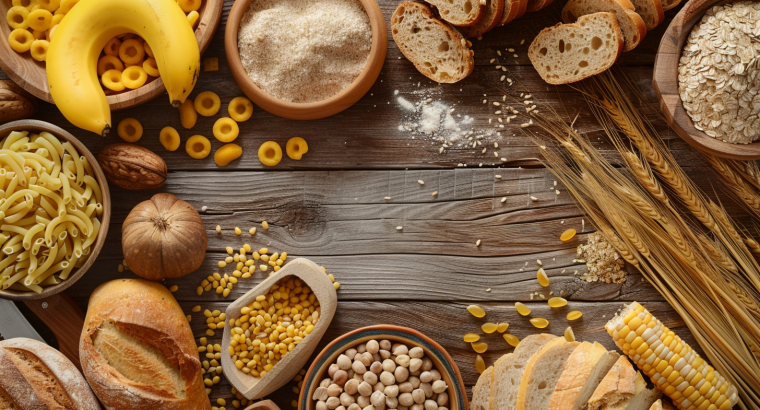Understanding Carbohydrate Counting
For individuals with diabetes, managing blood sugar levels is a daily challenge. One effective strategy to achieve better control is carbohydrate counting. However, this approach can be confusing and overwhelming for many. In this blog post, we will address the common issues faced by diabetics when it comes to carbohydrate counting and provide practical solutions to make the process easier and more effective.
The Problem: Common Challenges in Carbohydrate Counting
1. Complexity and Confusion
Carbohydrate counting can be complex, especially for those new to the concept. Understanding which foods contain carbohydrates and how to measure them accurately can be daunting.
2. Time-Consuming Process
Accurately counting carbohydrates requires time and effort, including reading food labels, measuring portions, and calculating carbohydrate content, which can be overwhelming for those with busy lifestyles.
3. Inconsistent Information
Different sources can provide varying information on carbohydrate content, leading to confusion and potential errors in counting. This inconsistency can make it difficult to maintain accurate records and manage blood sugar levels effectively.
The Solution: Practical Tips for Effective Carbohydrate Counting
To overcome these challenges, it is essential to adopt a structured approach to carbohydrate counting. Here are some practical tips and strategies to help you master this important skill:
1. Educate Yourself on Carbohydrate-Containing Foods
Why It Helps: Understanding which foods contain carbohydrates is the first step in effective carbohydrate counting. Carbohydrates are present in a wide range of foods, including grains, fruits, vegetables, dairy products, and sweets.
Practical Tips:
- Learn to identify carbohydrate-containing foods by categories: starches (bread, rice, pasta), fruits (apples, bananas, berries), dairy (milk, yogurt), and sweets (cookies, candy).
- Familiarize yourself with foods that are low in carbohydrates, such as non-starchy vegetables (spinach, broccoli, peppers) and proteins (meat, fish, eggs).
2. Use Reliable Resources
Why It Helps: Accessing reliable resources ensures you get accurate and consistent information on carbohydrate content. This helps prevent errors and maintains effective blood sugar control.
Practical Tips:
- Use carbohydrate counting books and apps that provide detailed information on various foods and their carbohydrate content.
- Refer to reputable websites and organizations, such as the American Diabetes Association, for guidelines and resources.
3. Measure and Weigh Your Food
Why It Helps: Accurately measuring and weighing food portions ensures precise carbohydrate counting. Estimating portions can lead to significant errors and affect blood sugar management.
Practical Tips:
- Invest in a digital kitchen scale to weigh foods like grains, fruits, and starchy vegetables.
- Use measuring cups and spoons to measure portions of liquids, yogurt, and other foods.
4. Read Food Labels Carefully
Why It Helps: Food labels provide essential information on carbohydrate content per serving, helping you count carbohydrates accurately. Understanding how to read these labels is crucial.
Practical Tips:
- Pay attention to the serving size listed on the label and adjust your calculations based on the portion you consume.
- Note the total carbohydrate content, which includes sugars, fiber, and starches. Subtract dietary fiber from the total carbohydrates if it exceeds 5 grams per serving, as fiber does not impact blood sugar levels.
5. Plan Your Meals
Why It Helps: Planning meals ahead of time helps ensure balanced carbohydrate intake throughout the day. It also reduces the stress of last-minute food choices and helps maintain stable blood sugar levels.
Practical Tips:
- Create a weekly meal plan that includes the carbohydrate content for each meal and snack.
- Prepare meals and snacks in advance to save time and reduce the temptation of choosing high-carb, processed foods.
Sample Daily Meal Plan with Carbohydrate Counting
To illustrate how carbohydrate counting can be incorporated into daily life, here is a sample meal plan with carbohydrate content listed for each item:
Breakfast:
- 1 slice of whole-grain toast (15g carbs)
- 1 scrambled egg (0g carbs)
- 1/2 avocado (6g carbs)
- 1 small apple (15g carbs)
Total: 36g carbs
Mid-Morning Snack:
- 1 cup of Greek yogurt (6g carbs)
- 1/4 cup of blueberries (5g carbs)
Total: 11g carbs
Lunch:
- Grilled chicken salad with mixed greens, cherry tomatoes, cucumber, and olive oil dressing (8g carbs)
- 1 small whole-grain roll (15g carbs)
Total: 23g carbs
Afternoon Snack:
- 1 small handful of almonds (6g carbs)
Total: 6g carbs
Dinner:
- Baked salmon (0g carbs)
- 1 cup of steamed broccoli (6g carbs)
- 1/2 cup of quinoa (20g carbs)
Total: 26g carbs
Evening Snack:
1 small pear (15g carbs)
Total: 15g carbs
Daily Total: 117g carbs
Conclusion
Carbohydrate counting is a powerful tool for managing diabetes, but it can be challenging without the right knowledge and resources. By educating yourself on carbohydrate-containing foods, using reliable resources, measuring your food accurately, reading food labels, and planning your meals, you can master carbohydrate counting and achieve better blood sugar control.
Ready to take control
Ready to take control of your diabetes management with effective carbohydrate counting? Start by incorporating these practical tips into your daily routine. Share your experiences and tips with our community, and don’t forget to subscribe to our blog for more health insights and diabetes management strategies!

